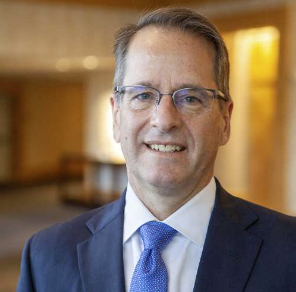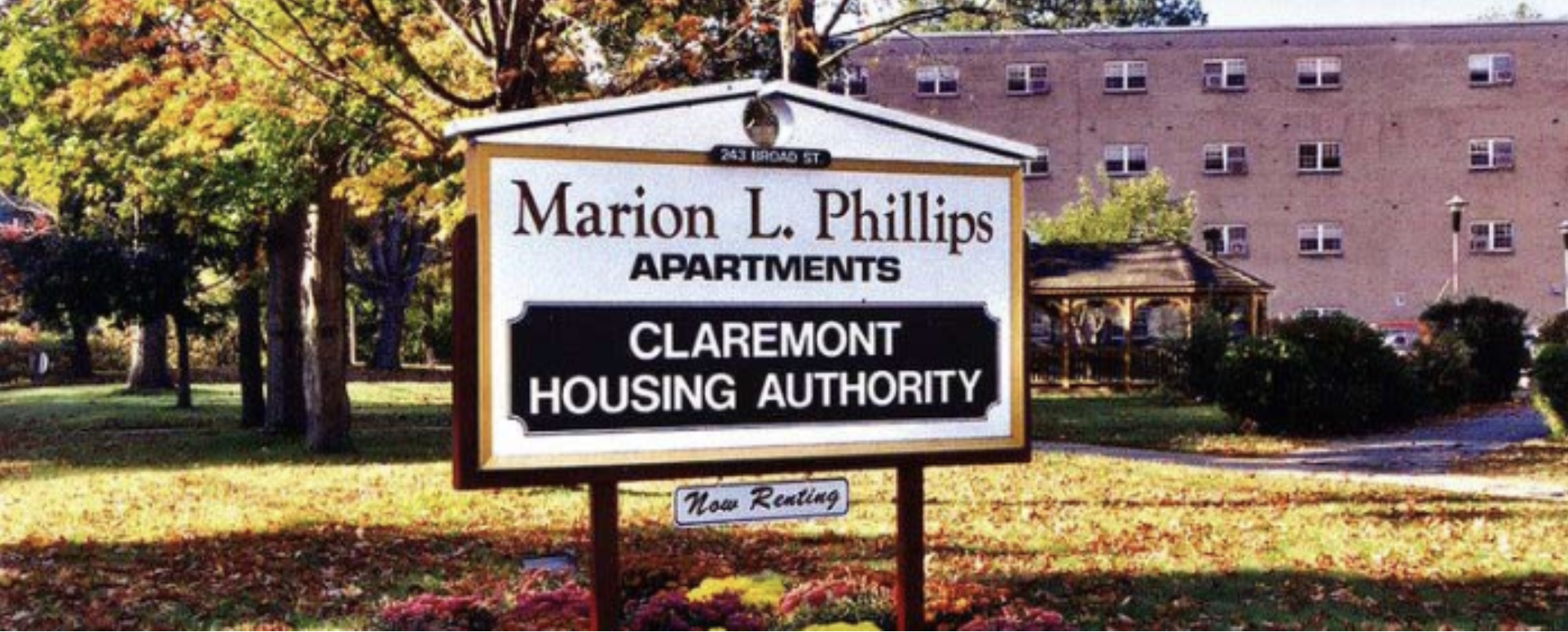By Rosemary Ford and Caitlin Agnew
This article has been edited for length and clarity.
The median cost for a two-bedroom apartment in New Hampshire is about $1,584. To afford it, someone would have to earn about $31 an hour. With the minimum wage at $7.25 an hour, someone working 168 hours a week — every hour of every day — could not afford the rent. To kick off an occasional series on homelessness, Melanie Plenda talks with Jennifer Chisholm, executive director of the New Hampshire Coalition to End Homelessness, about the problems and solutions related to homelessness in New Hampshire.
Melanie Plenda:
Let’s talk about some of the terms that we use when we talk about homelessness, like “housed,” “unhoused,” “sheltered” and “unsheltered.” What are some of those common terms, and why do they matter? Is homelessness a bad word?
Jennifer Chisholm:
There are some people who are shifting the language to talk about “houselessness”’ instead of “homelessness” in that somebody can make a home for themselves, anywhere. We still choose to use the term homelessness, as it is common vocabulary. The federal government actually doesn't have one set definition of homelessness; it depends on the agency that you're talking about.
When we are talking about our numbers, we're generally looking at (U.S. Department of) Housing and Urban Development definitions. They talk about “sheltered” versus “unsheltered.” Somebody who's unsheltered is staying in someplace like a car, a tent, an encampment on the streets, in the parking garage — places like that. Somebody who is sheltered may have a roof over their head, such as an emergency shelter or a housing program for people who are experiencing homelessness to help stabilize them.
Another definition that's really important to know is “chronic homelessness.” That is when somebody has either been homeless for 12 months straight or has experienced at least 12 months of homelessness in four chunks or more over the last three years. For somebody to meet that definition, they also have to have a disabling condition of some sort. So when you're talking about people who are chronically homeless, then you're talking about some extremely vulnerable people.
Melanie Plenda:
What does homelessness look like across the state of New Hampshire? Where does it exist?
Jennifer Chisholm:
Everywhere — from all the way from Nashua up to Berlin, and everywhere from east to west as well. So both rural and urban homelessness do exist in the state, and it can really vary. I was referring to the HUD definitions earlier, there are people who are unhoused or maybe accessing an emergency shelter or a supportive housing program. That does not look at another section of people experiencing homelessness, who are what’s called either couch hopping or doubled-up. Those are people who are maybe crashing on my couch because they don’t have a lease or staying with family members because they can’t afford their own place. We don’t have great numbers about that population — it’s kind of a hidden population — but it’s something I always like to talk about to make sure we’re considering that as well because it’s not captured in the numbers that we generally discuss about homelessness.
Melanie Plenda:
Does homelessness look different in an urban versus a rural environment?
Jennifer Chisholm:
I would say that it comes down to lack of affordable housing and poverty in both spaces. However, people who are living in urban environments typically may have better access to services. When you think about rural New Hampshire, services are fewer and farther between and transportation may be a larger barrier. There are cities in New Hampshire that do have public transportation systems but that certainly don't exist in most of rural New Hampshire. Then you think of employment opportunities, the housing stock — we do want to make sure we’re looking at both rural and urban homelessness and assessing what the needs are for each population.
Melanie Plenda:
What do you think are the impacts of that lack of visibility in some of those more rural environments on services for folks?
Jennifer Chisholm:
When it comes to service provision and the ability to build the relationships in order to provide services to people, having worked as an outreach worker in the encampments in Manchester, I know that the first time we make contact with somebody who may need some assistance, that person isn't always going to necessarily have the trust needed in order to accept help or ask for something that they may need. I’ve seen it take six months, nine months before a person becomes comfortable to ask for support. When it’s hard to find people, such as in a rural environment or even in an urban environment, where people are being moved from the encampments, it just makes that process so much more difficult. The time that it takes to get somebody really connected with resources is so much longer.
Melanie Plenda:
Let's talk about the reasons people are homeless. What has your experience been?
Jennifer Chisholm:
The answer to that question is so amazingly complex, but I think that it boils down right now to the housing crisis in New Hampshire. We have a very significant lack of housing that's available for people. A healthy vacancy rate — meaning the percentage of apartments or rental units that are available for rent in a given time — in a healthy rental economy is between 5 and 8%. Right now, in New Hampshire, it's running at, depending on the county, around 0.6%, or about 1/10 of where it should be.
That means that people with excellent rental histories who are looking to rent a new apartment are having trouble finding a place. Never mind somebody who may have had some housing instability – who doesn't have a stable landlord reference history, may have an eviction on their record, their credit score may not be great — they have these other barriers that are preventing them from being that top candidate and are having extreme difficulties finding apartments. While there are many, many, many other reasons that people may become homeless, the housing economy right now is the prime driver.
Melanie Plenda:
Understanding that the reasons are very complex, but what are some of the misconceptions out there about why people are homeless? I’ve heard even well-meaning people say, “they must want to be homeless” or “they’re choosing to be homeless” and things like that, on the face of it, seem probably not true.
Jennifer Chisholm:
The New Hampshire Coalition to End Homelessness actually runs a program called Granite Leaders where we work with people who have experienced homelessness in their lives. So these are people who are interested in learning leadership and advocacy skills in order to help their voices become part of the solution. We just had graduated our 2024 class, and one of the conversations that we had over the course of the five-day program was exactly that — what were the things that you heard from people when you were experiencing homelessness that did not represent your experience?
They were saying things like, “People thought that we were lazy”’; “People say we must be on drugs”; “People told us we must be crazy”; or, “If you only just got a job, then it should be fine.”
It’s just not that simple. I’ll also say that there's data that shows, nationally, that there are more people who end up using substances who did not use substances prior to experiencing homelessness. Rather, they became homeless and then ended up using substances as a coping mechanism for the trauma that they experienced while being homeless.I think that is a really big stigma that we really need to bust. We hear sometimes,, “Oh, they're just all addicts” — that statement just hurts my heart. I think that public education is going to be a really big part of the solution for this to help people understand the truth of the matter, rather than the complexities of it rather than the stereotypes that we might have in our head.
Melanie Plenda:
How does the state tackle homelessness? What are some of the resources out there?
Jennifer Chisholm:
The state has a Bureau of Homeless Services, and they oversee distribution of funding for street outreach programs, emergency shelter programs, supportive housing, rapid re-housing programs. They’re doing a lot. I will say that, having worked in this field for about 20 years, the conversation and attention that this issue is getting and the level of support services has grown exponentially.
Also, the Coalition to End Homelessness in combination with Community Development Finance Authority, are partnering on a resource library for homeless service providers and others to start sharing best practices for working with people experiencing homelessness. This means we can have really good information and data to share about what works. There are limited resources for this, so we want to make sure that what we're doing is effective.
Melanie Plenda:
Are there any resources that the state provides directly?
Jennifer Chisholm:
Some of the things that the state provides that are extremely important may not fall under that Bureau of Homelessness Services — things such as the Medicaid expansion have been extremely helpful for people getting health care and even case management services from their Medicaid providers. There are also things like food stamps, so people can be food-stable and fuel themselves, and have the energy to connect with all of those resources.
The Bureau of Homelessness Services also oversees what's called the Balance of State Continuum of Care, which is required by HUD, to come together as the homeless services providers and key stakeholders to collaborate and work in your region to make sure that everybody's working together. There are three in New Hampshire – one in Manchester, one in Nashua, and there's what's called the Balance of State, which is every other municipality in the state.
Melanie Plenda:
How are charities and other nonprofits a part of the puzzle?
Jennifer Chisholm:
Generally, the funding that the state obtains then gets distributed down through to the nonprofits that then provide the direct services. They are a huge part of not only the direct services, but a part of the solution because they are the people who are in the weeds, seeing what's working, what's not, and what are the true needs. They're able to communicate to those who are figuring out the best solutions to this very complex problem.
Melanie Plenda:
What can people do to help? What's the best way to move the needle on this?
Jennifer Chisholm:
Programs like this are immensely helpful for people to be able to just hear some of the information that might push against things that they may have heard in the wind and might not be fully true. Ending that stigma and bias against people experiencing homelessness is going to go a long way because we’re hoping to garner more support around some of the changes that are happening in the state.
There are a lot of really great organizations that are sharing information, sharing solutions, so getting connected on social media and hitting that share button when you see a post that you like — pushing out and sharing any information that you think could be helpful.
Then there’s tracking what's going on either within the municipality where you live or in the state in general.There were a lot of really interesting bills that came through this year and this legislative session around housing. I will give a shout out to New Futures, an advocacy organization that has really wonderful directions on their website about how you can check into a hearing to say, “yes” or “no” to a bill. When COVID hit, the legislature in New Hampshire was wonderful and figured out a way for people to participate in a way that wouldn't put their health at risk for the pandemic, and they've maintained that. It's super easy and super fast, so I recommend that everybody become familiar with that as well.
Melanie Plenda:
Jennifer Chisholm, executive director of the New Hampshire Coalition to End Homelessness, thank you so much for joining us today.
“The State We’re In” is a weekly digital public affairs show produced by NH PBS and The Marlin Fitzwater Center for Communications. It is shared with partners in the Granite State News Collaborative, of which both organizations are members. These articles are being shared by partners in the Granite State News Collaborative. For more information, visit collaborativenh.org.




















